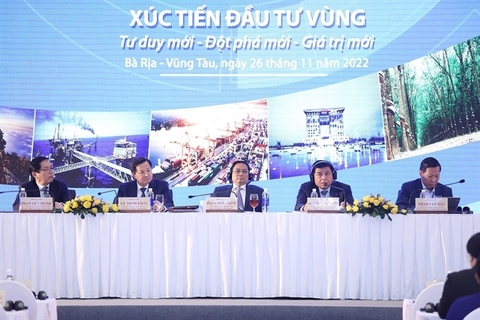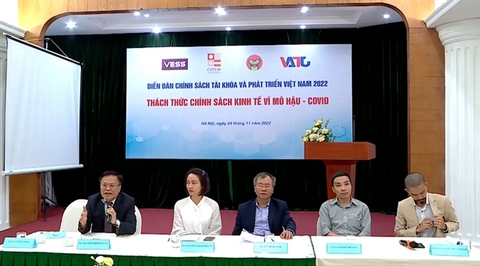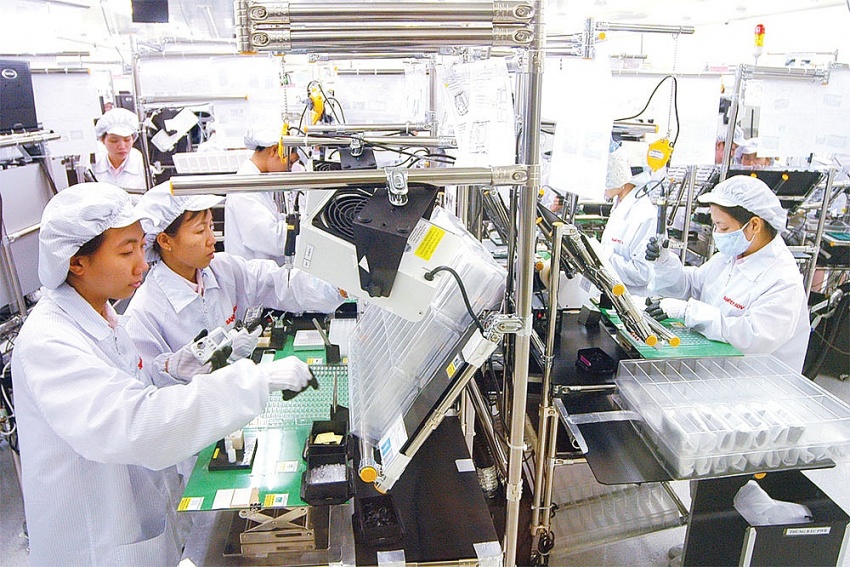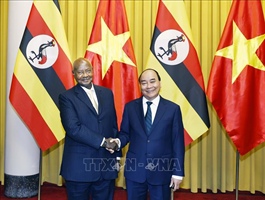Ba Ria – Vung Tau’s investment attraction capability to increase
Ba Ria – Vung Tau’s investment attraction capability to increase
A great deal of investment opportunities will open for Ba Ria – Vung Tau Province, with many policies that will improve the province’s infrastructure and economy.

A conference was held last weekend on the Government’s action plan for implementing the Politburo’s Resolution No, 24-NQ/TW on boosting socio-economic development and security in the southeastern region by 2030, with a vision to 2045 (following the Government's Resolution No. 154/NQ-CP on the action plan of Resolution No. 24-NQ/TW issued on October 7 this year), as well as to facilitate investment into the region.
At the conference, Prime Minister Pham Minh Chinh commended the achievements of the southeastern localities, saying the region is the largest contributor to the country’s GDP, has the largest number of businesses, and the highest amount of foreign direct investment.
The resolution entails solutions for improving infrastructure, many of which directly affect the province’s infrastructure and economy for the next five years. These improvements will in turn enhance the province’s ability to draw in investment from domestic and foreign businesses.
These include investment into the Bien Hoa – Vung Tau railway for transporting goods, which will connect to the Cai Mep – Thi Vai seaport; the expansion of Con Dao Airport; and the development of big industrial complexes focusing on industry, services and urban areas in the province’s Phu My New City.
Nguyen Van Tho, chairman of the Ba Ria – Vung Tau People’s Committee, said during the conference that the province has an initiative to form a free trade zone associated with a deep-water seaport in the Cai Mep Ha area and develop the province into a world-class tourism hub following the Politburo’s Resolution No. 24-NQ/TW.
“The formation of the Cai Mep Ha free trade zone will create an effective economic tool for Viet Nam to compete with regional countries in attracting investment and implementing the new phase of the industrialisation strategy, and will be the driving force for the southeastern region to make greater contributions to the country’s development.”
The province will create strategies to attract capable investors into the free trade zone, focusing on key industries such as the hi-tech industry, seaport and logistics, tourism and commerce, digital economy and finance. It will also ensure sufficient infrastructure works and land plots within the zone.
Regarding Ba Ria – Vung Tau’s plan to develop Vung Tau City into a world-class tourism hub, the province will carry out numerous solutions, including focusing on urban development, especially seaside urban areas towards green and sustainable urban models; preserving and ultilising its cultural heritage value; and raising awareness of the importance of tourism in economic development.
It will also improve its infrastructure system to boost connectivity within the province and in the region, which in turn will enhance linkages for tourism and socio-economic activities.
The Government’s action plan targets strengthening linkages between industrial parks and export processing zones in the southeastern region, developing the region into a financial, commercial, services, and international exchange hub in the Southeast Asia. It also aims to develop Ba Ria –Vung Tau into a national marine economic centre.
As part of the conference, the Ministry of Planning and Investment and provinces and cities in the region granted investment registration certificates and signed MoUs for investment cooperation with local and foreign investors for 20 projects with a total investment of US$10 billion and more than VND5 trillion ($202.4 million).
Among them, Chairman Tho granted investment certifications and signed MoU with 10 projects in the province, worth a total of over $8 billion.
These projects include a $5.5 billion expansion of Long Son Petrochemicals, a $1.3 billion project for manufacturing industrial wood using Cross Laminated Timber technology for the construction and ship manufacturing industries, and a $380 million expansion of the Marubeni paperboard factory.





















